The Booker Prize Shortlist 2024
The Booker Prize is a literary award scheme which started in 1969. Originally, the Prize was a way to highlight Commonwealth writers, but now spans literature from across the globe. The Booker Prize winner earns the winning author a sum of £50,000. Winning books, according to the Booker Website, will “not only speak to our current times, but also one that will endure and join the pantheon of great literature.”

The Shortlist was announced earlier this week and the winner will be announced on 21st May.
Now, let’s take a look at the nominees! (Synopses taken from the Booker Prize Website).
Mater 2-10
This book is by South Korean author, Hwang Sok-yong and translated by Sora Kim-Russell. According to the Booker website, Hwang Sok-yong is one of South Korea’s most revered authors and “was imprisoned for five years for travelling to North Korea to promote exchange between artists in the two Koreas.” He has been the recipient and nominee of several international book prizes.
An epic, multi-generational tale that threads together a century of Korean history. Centred on three generations of a family of rail workers and a laid-off factory employee staging a high-altitude sit-in, Mater 2-10 vividly depicts the lives of ordinary working Koreans, starting from the Japanese colonial era, continuing through Liberation, and right up to the twenty-first century.
Crooked Plow
From Salvador, Brazil, the author Itamar Vieira Junior’s book, translated by Johnny Lorenz, tells the tale of the lives of farmers from one of the poorest areas of Brazil. Vieira Juniro holds a doctorate in Ethnic and African Studies and has previously published a series of short stories.
Deep in Brazil’s neglected Bahia hinterland, two sisters find an ancient knife beneath their grandmother’s bed and, momentarily mystified by its power, decide to taste its metal. The shuddering violence that follows marks their lives and binds them together forever.
Not a River
This Argentinian book is by Selva Almada, known as a powerful voice within Latin American and Argentinian literature. Annie McDermott translated this book from Spanish. Not a River is a powerful novel that poetically portrays the characters and their surroundings well. We’ll certainly be giving this book a read!
Three men go out fishing, returning to a favourite spot on a river in Argentina, despite their memories of a terrible accident there years earlier. As a long, sultry day passes, they drink and cook and talk and dance, and try to overcome the ghosts of their past. But they are outsiders, and this intimate, peculiar moment also puts them at odds with the inhabitants of this watery universe, both human and otherwise. The forest presses close, and violence seems inevitable, but can another tragedy be avoided?
Kairos

We now head over to Germany, thanks to the well-known author Jenny Erpenbeck. She is the author of many successful books. This book in particular was translated by Michael Hoffman. Kairos is a love-story that pulls between pain and pleasure! This sounds like a real page turner!
Berlin. 11 July 1986. They meet by chance on a bus. She is a young student, he is older and married. Theirs is an intense and sudden attraction, fuelled by a shared passion for music and art, and heightened by the secrecy they must maintain. But when she strays for a single night he cannot forgive her and a dangerous crack forms between them, opening up a space for cruelty, punishment and the exertion of power. An intimate and devastating story of the path of two lovers through the ruins of a relationship, set against the backdrop of a seismic period in European history.
What I’d Rather Not Think About
By Dutch author Jente Posthuma, and translated by Sarah Timmer Harvey, What I’d Rather Not Think About tells the story of a pair of twins intertwined in an emotional struggle. This is not her first successful novel. Her 2016 debut novel received critical acclaim and three literary prize nominations.
What if one half of a pair of twins no longer wants to live? What if the other can’t live without them? This question lies at the heart of Jente Posthuma’s deceptively simple What I’d Rather Not Think About. The narrator is a twin whose brother has recently taken his own life. She looks back on their childhood, and tells of their adult lives: how her brother tried to find happiness, but lost himself in various men and the Bhagwan movement, though never completely.
The Details
The next book on the Longlist is The Details by la Genberg. This Swedish book, translated by Kira Josefsson, is the author’s first book to be translated into English. The book is relatively short at 150 pages but has been described as like reading ‘a fever dream’. From the synopsis alone, this is certainly going onto our to read list!
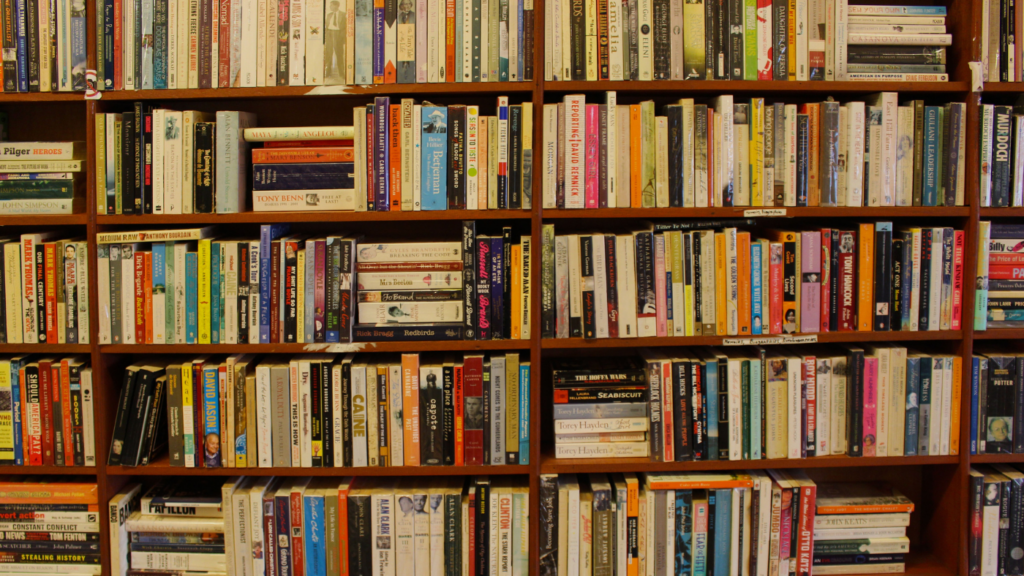
A famous broadcaster writes a forgotten love letter; a friend abruptly disappears; a lover leaves something unexpected behind; a traumatised woman is consumed by her own anxiety. In the throes of a high fever, a woman lies bedridden.
Suddenly, she is struck with an urge to revisit a particular novel from her past. Inside the book is an inscription: a message from an ex-girlfriend. Pages from her past begin to flip, full of things she cannot forget and people who cannot be forgotten. Johanna, that same ex-girlfriend, now a famous TV host. Niki, the friend who disappeared all those years ago. Alejandro, who appears like a storm in precisely the right moment. And Birgitte, whose elusive qualities shield a painful secret. Who is the real subject of a portrait, the person being painted or the one holding the brush?
Even though these next entries didn’t quite make the shortlist, we’re really excited to check them out!
Simpatía – by Rodrigo Blanco Calderón and translated by Noel Hernández González and Daniel Hahn
White Nights – by Urszula Honek and translated by Kate Webster
The House on Via Gemito – by Domenico Starnone and translated by Oonagh Stransky
Lost On Me – by Veronica Raimo and translated by Leah Janeczko
A Dictator Calls – by Ismail Kadare and translated by John Hodgson
The Silver Bone – by Andrey Kurkov and translated by Boris Dralyuk
Undiscovered – by Gabriela Wiener and translated by Julia Sanches
Here at Web-Translations, we would like to congratulate all long- and shortlisted nominees and wish the authors luck in the final stage of the awards!
We’d love to hear which of the nominees have caught your eye! Let us know your favourite picks on Twitter and LinkedIn! Don’t forget to check out some of our other literature in translation blog posts as well!
Stress Awareness Month: Learning To Live With Stress
Stress is something that all of us experience. Sometimes it can be caused by a major change at work or an ill relative. Other times it can just stem from something as simple as a cluttered house or noisy neighbours! However, learning to live with and manage stress is not so simple. It’s an ever-changing learning curve, but here are some useful tips and practices to help make things that little bit easier!
Making It Make Sense
It’s very easy for stress to take over everything. Often being caused by anxiety, it won’t magically disappear, but it can be managed. The first step to making sense of stress is understanding what it is, and what is causing it at that time. Being able to rationalise it will help massively. This can help you learn to make sense of it. X is causing you stress, so you can do Y and Z to reduce your stress levels. With this in mind, it’s still important to allow yourself to feel. It will allow you to get it out of your system, and it’s much better than bottling it up.
Confiding in someone you trust will also help you manage your stress. An outside perspective can help you make sense of things, and you’ll often feel a weight lifted off your mind afterwards. Since the cost of living crisis, it’s much more acceptable to discuss financial worries than before. I’ve found talking to someone about it to be really helpful in managing financial stress. Even though it won’t magically fix everything, a second perspective can help you make sense of things.
Find a Routine
Creating a sense of structure can be really helpful in isolating and containing the stresses of the day. Small morning and evening routines act as book-ends which stop stress carrying over to the next day. Keeping the day’s stress contained makes it easier to manage, and prevents it from snowballing and overwhelming you.

Having a routine on both sides of your day will help you think of them as reset buttons. For example, making a coffee in the morning to start, and having a cup of tea and a snack when you finish for the day to end the shift. Personally, I find this close down routine really helps me deal with stress, especially if my workspace is messy.
Doing a close and reset as part of a routine is great for peace of mind. You’ll also have less worry about the next day, so you can to start with a clean slate.
If you work from home, having your break completely detached from your workspace is incredibly helpful in cementing the bookend idea to your routine. Leaving your desk or office for the full duration of your break allows you to properly relax. Before coming back, making yourself a drink can help get you back into work mode as well.
Be Kind to Yourself
Hobbies are a great example of distractions you can find to take your mind off things, especially if you’ve had a stressful day. A tried and tested method is reading. It’s a fantastic way of helping you relax, and it gives you something to focus on, so you can put the stresses of the day out of your mind. Using hobbies to treat yourself is another good practice. You can do something you enjoy, and in a way, it’s a reward to yourself for getting through the day.
I find painting models a fantastic stress relief. I started after a friend recommended it. This allows me to be more mindful by focusing entirely on my painting. Granted, it can be fiddly, but the rewarding feeling once I’ve finished is more than worth it!

Going outside for exercise, or even just to be in nature is proven to help relieve stress. Even for just 15 minutes a day, this can really help improve mental health. It is, unfortunately, weather-dependant, particularly in the UK, but being able to leave the house and just be in nature really can be revolutionary.
If a friend or family member’s situation is worrying you, you can meet up with them and go for a walk in a local park. Seeing them will put your mind at ease. You can both help each other, and you’ll both be able to enjoy the benefits of being outside. Also pairing it with a task that requires you to leave the house is also helpful to tick something off your list. If I have to return a parcel, I’ll often go on my lunch break, as the fresh air and exercise are great for breaking up the day and resetting myself for the afternoon.
Don’t Be Scared of Help
It’s important to remember that when it comes to stress, don’t keep trying to push through it. If help is available to you, make the most of it!
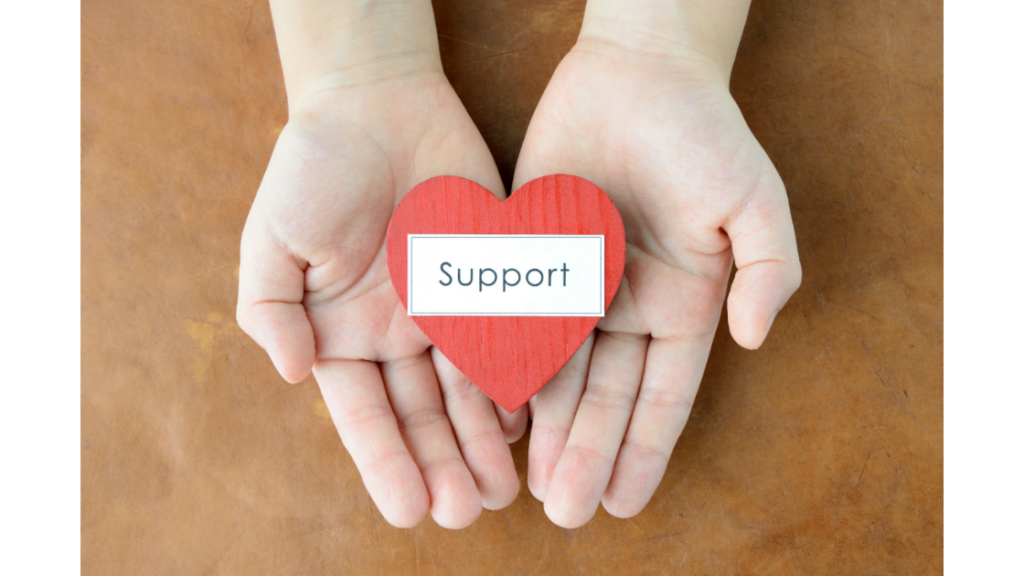
You shouldn’t be scared or worried about asking someone for help – they will almost always say yes. You will realise that you’re not alone, and it will help you feel less overwhelmed. It will feel scary at the time, but you’ll soon find out that you it’s not as bad as you thought.
Living with stress isn’t easy. Some days are much harder than others, but it isn’t the end of the world even if it feels that way. Friends, family, and even your employer can offer advice and resources to help when things are getting too much. Just remember that help is there for you, so don’t be afraid to ask for it.
What helped you learn to live with stress? We’d love to hear if you have any tips! Get in touch with us on our Twitter or LinkedIn pages and let us know! You can also check out our previous mental health blogs here!
April Fools: How It’s Celebrated
It’s April Fools Day next week! On the 1st April every year, April Fools Day is celebrated across the world. From silly jokes, to elaborate fake stories, the world has a day of fun!
It’s a bit of an unusual celebration as the reason for it is actually unknown. Some say it was originally to celebrate Renewal Festivals, dating back to Roman times. The festivals would celebrate the start of a new year, which could be due to the start of nature beginning to grow again. Others believe that the tradition started in 1582 when France started to use the Gregorian calendar rather than the Julian one. This meant that the New Year was celebrated on 1st January, rather than 1st April. It is said that many people didn’t hear about the change and continued to celebrate the New Year in April and they were consequently subject to hoaxes and jokes.
Despite not knowing the reason for celebrating and its origins, this day is often a day of funny practical jokes. In this blog, we’re going to have a look at how countries around the world celebrate this day!
Scotland
The tradition in Scotland is actually a 2-day event. 1st April is known as Hunt the Gowk Day, where gowk translates to cuckoo. The prank is, in a way, a wild goose chase. People would prank others by sending them on pointless tasks. For example, they may be asked to deliver a letter asking someone for their help. The recipient would say they would if the messenger asks someone else first. This continues until the Gowk realises that they are being pranked. The next day is known as Tailie Day. This is because one of the main jokes is pinning a sign on someone’s back saying kick me.
France
The day is called Le Poisson d’Avril in France, translating to April Fish. People eat fish-shaped chocolate and also tape fish-shaped paper to their friends’ backs. They will then shout Possion d’avril. This day started out particularly fishy as pranksters in the 15th century would stick real fish to the back of victims without them knowing.
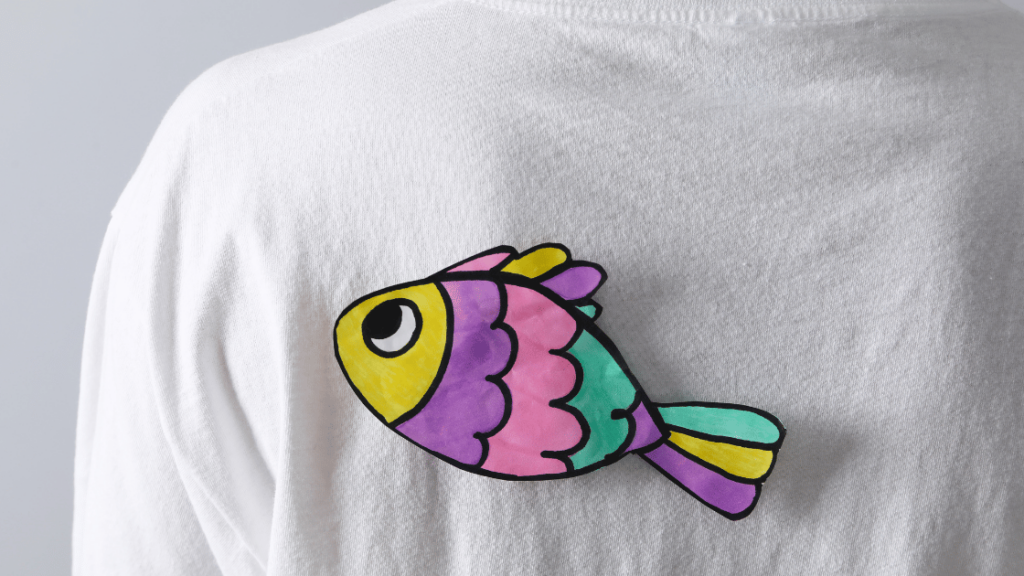
Sweden
Första April is also full of various pranks, but instead of shouting April Fools, they would shout “April, April, din dumma sill, jag kan lura dig vart jag vill!” which means “April, April, you stupid herring, I can trick you wherever I want!”
Germany
It’s also said that April Fools Day may have actually originated in Germany. In the 1860’s, a man named Gabriel Hoffman decided to play a prank on lawmakers. On 1st April, he arranged a meeting, which turned out to be a rouse. The prank was a success and the Germans adopted the tradition. However, it’s bad luck to play any pranks after 12pm.
Portugal
April Fools Day in Portugal is celebrated on the Sunday and Monday before lent. Be wary if you find yourself here at this time, as it’s a tradition to throw flour over unsuspecting victims.

USA
April Fools Day in the US usually involves news outlets and large companies being quite creative with their marketing. Most often create rather elaborate news stories. Some of them are actually quite believable.
Poland
In Poland the day is also celebrated by playing a variety of jokes and pranks. It’s known as Prima Aprillis and there is a popular Polish rhyme which says: “Prima Aprilis – uważaj, bo się pomylisz!” – which means, “April Fools’ Day, be careful, you can be wrong.”
April Fools Day is celebrated in some weird and wonderful ways around the world. This type of cultural event is important to know about when translating content, especially since different countries celebrate it in different ways.
We hope you’ve enjoyed reading about the various types of April Fools celebrations. If you’d like to read about other international celebrations, why not take a read of our Summer Solstice Festivities blog? What’s your favourite April Fools prank? Let us know via our Twitter or LinkedIn page.
Meet the Team – Alexia O’Rourke
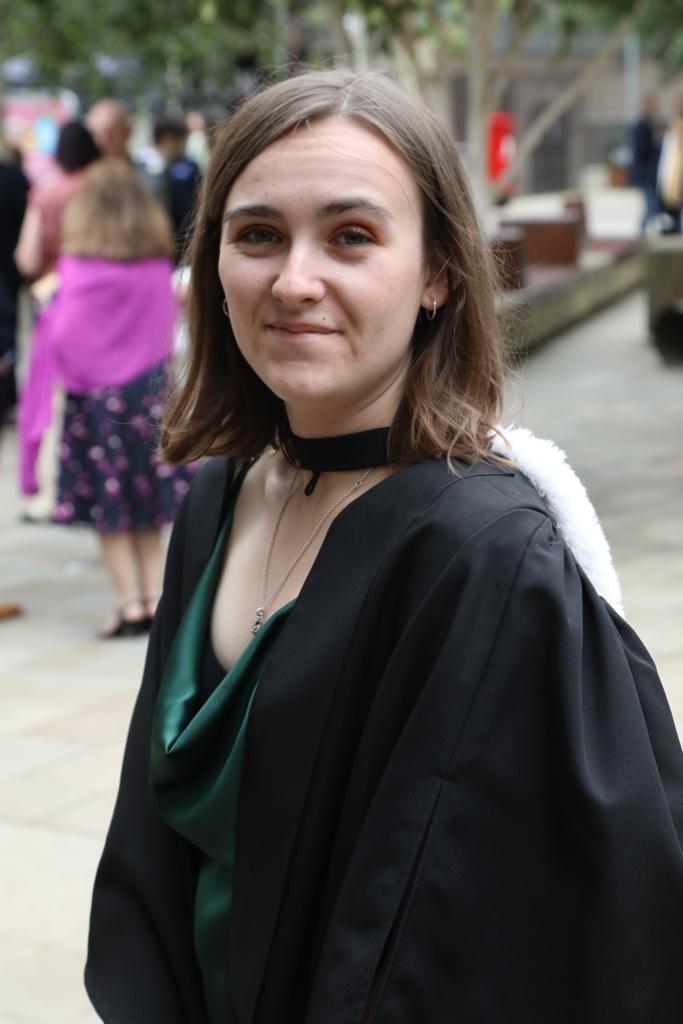
Hi everyone!
I’m Alexia and I am thrilled to be joining the Web-Translations Team as a Translation Projects Apprentice.
I have always been a bit of a languages nerd! My love for language learning was fostered at secondary school where I studied both French and German until A-Level.
At Newcastle University, I studied translation from undergraduate, through to master’s. I am proud to say that I earned a distinction in MA Professional Translation with French and Chinese. Throughout my studies, I got the opportunity to work on subjects ranging from French-Caribbean Literature to CAT tools and Localisation.
Whilst a lot of my time as a student was spent in Newcastle, I did get to spend some time abroad in China. Even though my time abroad was cut short by the pandemic, this is a time that I look back on very fondly. Living abroad gave me the opportunity to meet people from all over the globe whilst honing my language and intercultural skills. Overall, my favourite example is probably from when I spent Christmas abroad. Despite many negotiations, we couldn’t decide what to do for Christmas dinner because there was such a wide range of traditions. Eventually, we came to the conclusion that everyone liked pizza and thus, a Christmas pizza party we had!
My MA was where I really found my passion for the translation industry. Through my degree I learned some of the inner workings of the translation sphere. The idea of being able to bridge between languages and cultures to connect people is something that excites me!
Besides work, I love being outdoors and being active. I spend a lot of time running with friends! I also have a hamster called Maggie!
At Web-Translations, I’m looking forward to connecting with linguists from all around the world, and learning the skills needed to be a successful Translation Project Manager!
Interested in learning more about our team members? Read more Meet the Team blogs here!
International Women’s Day: Top Advice
International Women’s Day is a day dedicated to celebrating the social, economic, cultural and political achievements of women around the world. This year’s campaign theme is to Inspire Inclusion. To find out more about International Women’s Day and the 2024 campaign, take a look at there website here. This year, we wanted to find out more from our linguists about how their journey in the translation industry started.
We have asked several of our female translators the below three questions:
- Could you please tell us a bit about yourself? What inspired you to join the translation industry?
- What has been your biggest success so far?
- If you could give one piece of advice to younger girls and women, what would it be?
In this blog, we’ll share their responses to the final question, but if you want to read their responses to the first 2, you can read this blog here. It’s been lovely to see how the range of women all have their own successes and we think their advice is inspirational.
Thank you to all of the linguists that have contributed to our International Women’s Day blogs!
Ulrike – German
If you could give one piece of advice to younger girls and women, what would it be?
My advice to younger girls and women is to spend as much time as you can in the countries where your working languages are spoken. It will really push your language skills to the next level and help you along the way.
Secondly, work on your confidence! I think that women and girls are still conditioned to make themselves “smaller” than they really are. Stand proud, be your own most severe critic, but also your best friend. Always try to learn from your mistakes and don’t forget to pat yourself on the back when you’ve done a good job.
Most importantly, never, EVER overestimate the competition!
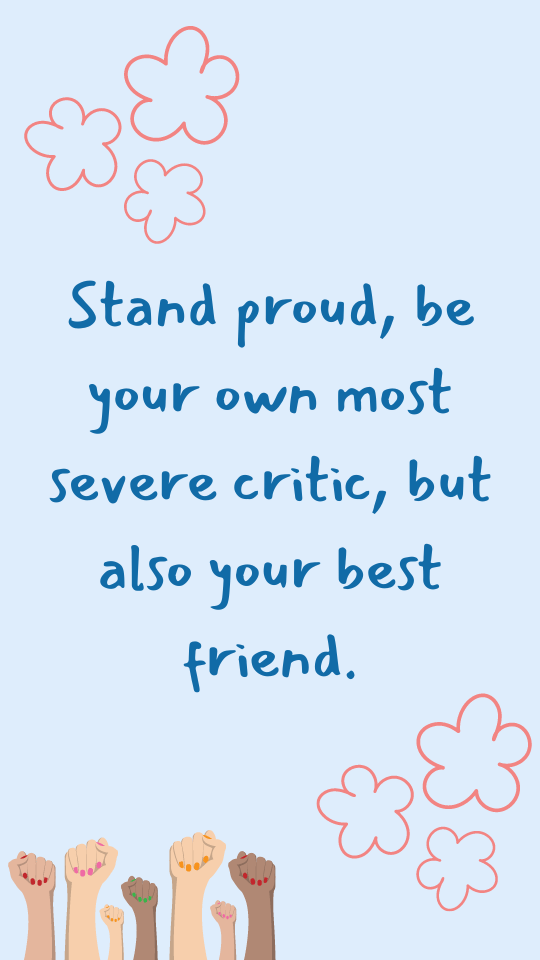
Katrin – Swedish
If you could give one piece of advice to younger girls and women, what would it be?
For aspiring young women considering a career in translation, I impart the wisdom gleaned from my own experience: cultivate a voracious appetite for literature and linguistic exploration. Reading in both native and source languages does not just hone language skill, but also gives a deeper appreciation for the nuances of cultural expression – a quintessential asset for translating.
As for life in general, I’m an advocate for the transformative power of travel. Venturing beyond the confines of familiarity not only broadens horizons, but also fosters empathy, understanding, and a thirst for knowledge. This is an invaluable investment in personal growth and enlightenment.
Ulgen – Turkish
If you could give one piece of advice to younger girls and women, what would it be?

One of my favourite Turkish idioms is ‘to have a golden bracelet on the arm’. This means ‘to have a skill or an occupation that would allow one to live her life without being financially dependent on others’. Why a golden bracelet? Because in Turkish culture, a golden bracelet is a traditional present given to a bride by family members and relatives. The golden bracelets collected on her wedding day can be later easily converted into cash. These are a woman’s security in her new life and for the future.
My native language, the language I learned at school and the ones I learned for pleasure are all my golden bracelets which have allowed me to create a rewarding professional life as a translator and an instructor.
Also, no matter how interrelated or irrelevant the accumulated skills collected (deliberately or not) are, they can be combined to build a purposeful and prosperous career aligned with your interests, passions and personality. To make a long story short, believe in the liberating power of golden bracelets and start collecting as many of them as possible.
Yinli – Mandarin
If you could give one piece of advice to younger girls and women, what would it be?
Personally, I’m always asking myself, “Do I really understand what I’m going to say, write and type? Do I really know what I have said, written and typed?”
Cassandra – Danish
If you could give one piece of advice to younger girls and women, what would it be?
My one piece of advice to younger girls and women ties in to what I consider my biggest success as a freelancer so far – don’t give up in the face of criticism and mistakes, and remember that starting a business is a massive venture and learning process. You will (likely) make mistakes, but no freelancer that has reached success hasn’t – it’s all about learning from them and navigating the challenges that arise. Have confidence in your abilities, and if you discover gaps in them, work to improve them rather than giving up.

Laura – Italian
If you could give one piece of advice to younger girls and women, what would it be?
Be flexible, adaptable and keep learning: you will always come across unexpected barriers in life and work, and the worst thing you can do is create barriers for yourself.
Ingrid – French
If you could give one piece of advice to younger girls and women, what would it be?

Work, work and work 🙂
And also, it is easy to think that what is important in this job is the source language… of course it is. But to me, what needs to be constantly improved is the target language. In my case, I’ve really improved the way I speak and write French since becoming a translator.
We hope you’ve loved finding about some of our female linguists and their successes in honour of International Women’s Day. If you have any questions for our linguists or some of your own advice, please just get in touch with us here.
International Women’s Day: Success
8th March is International Women’s Day. It’s a day to celebrate the social, economic, cultural and political achievements of women around the world. This year’s campaign theme is to Inspire Inclusion. To find out more about International Women’s Day and the 2024 campaign take a look at there website here.
We have asked several of our female translators three questions:
- Could you please tell us a bit about yourself? What inspired you to join the translation industry?
- What has been your biggest success so far?
- If you could give one piece of advice to younger girls and women, what would it be?
In this blog we’ll share their responses to their first 2 questions, so stay tuned for their advice in our next blog. It’s been lovely to see how the range of women all have their own successes and their different journeys into the translation industry.
Ulrike – German
Could you please tell us a bit about yourself? What inspired you to join the translation industry?
I enjoyed languages in school and didn’t want to become a schoolteacher, so translation/interpreting seemed a good career choice at the time. I studied German, English and Italian at Vienna University and graduated in 1998. Men were the exception rather than the rule, the courses were pretty much all-female. Many things have changed since then, but, men are still a rarity in the translation and interpreting classes that I teach at Innsbruck University today. Languages, I believe, are still seen as “female” subjects. However, I have noted that the men who DO end up on language degree courses are often quite technologically minded, which I put down to the rise of AI etc in the language industry. Maybe this development will end up attracting an additional target group, which might be a good thing.

What has been your biggest success so far?
My biggest success, is the fact that I have been making a living out of freelance translation and interpreting for almost a quarter of century. I love our line of work! The fact that it is so varied and that you never know what will come along next. Freelancing keeps you on your toes! You have to constantly adapt and learn new skills – including how to use CAT tools to subtitling programmes. I am hardly ever bored by my work, which is a great success indeed. Also, there are many advantages to working in an industry that is dominated by women, especially once you have a family. Other women tend to be more supportive in difficult situations. For instance when you have a sick child at home but are booked for an interpreting assignment.
Katrin – Swedish
Could you please tell us a bit about yourself? What inspired you to join the translation industry?
I have long harboured a passion for language and communication, which initially sparked aspirations toward careers in writing or journalism. However, it was upon relocating to the United States that I found myself immersed in the multilingual environment of a company. This is where I had the fortune of befriending individuals from diverse linguistic backgrounds. One such friend, who happened to work intermittently for a local translation firm, made me curious. I soon after started my journey as a full-time freelance translator, now 24 years in, I am happy I started that journey.
What has been your biggest success so far?
Without a doubt, my most cherished achievement in life transcends any professional or personal milestone. It is the privilege of witnessing the growth and development of my daughter into an exceptional young woman.
Ulgen – Turkish
Could you please tell us a bit about yourself? What inspired you to join the translation industry?
I have been actively working as a full-time freelance translator and a private tutor of English, Italian and Turkish since 1996. In fact, my experience as a translator goes back to the years when I worked for IBM Turkey in different positions and even to my university years. After discovering that I was putting my heart and soul more into translating and tutoring others than my then current job, I decided to work as a freelancer. I offered my language skills to companies and individuals as both a translator and an instructor. I can say with confidence that this was one of the best decisions I have made in my life. It is very satisfactory and perfectly fits my personality.
What has been your biggest success so far?
The definition of success depends on one’s expectations from life. For me, even the smallest achievement towards my dreams is success. I have always been wary of having big expectations and objectives. My dreams are generally realizable and they never revolve around materialistic values. One dream, however, always seemed unrealizable to me: writing a book. I ignored the urge to write professionally for so many years, but finally in 2018 I prepared a spiral bound Italian language book to use for my lectures. The book got more appreciation than I had expected. So I decided to transfer the content of this book to a blog where I would also post some articles.

However, one month in, the pandemic started. During lockdown, though often stressed and depressed, I had an incredible inspiration to write and very soon the blog became a therapy room for me. I wrote one long article almost every day and on some days I published even two. My mother, who had an unrealized dream of becoming a writer, wished that these articles be compiled in a book and not eventually get lost in the virtual world. I knew this would not have been easy under the circumstances of that period, but I would have done anything to cheer her (and myself) up. This is because in 2019 we lost my younger sister.
I worked very hard and compiled a book of more than 400 pages and got it published. When my published books arrived, I gave my mother one saying that the book of a new author had come out. I will never forget the expression on her face when she hugged me and expressed her hope that with this book good days would start again. At that moment, she did not even know that I had dedicated this book to my beloved sister. I now feel vey happy to know that my book, or rather my sister’s name, is in numerous book cases in Turkey and abroad. I believe that my book, through which I touched the hearts of so many people, has been my biggest success so far.
Yinli – Mandarin
Could you please tell us a bit about yourself? What inspired you to join the translation industry?
The very first time I started doing translation work was in my second year at university. I didn’t think much about it at the time and just went with what came to my mind after a bit of research. Besides taking on projects from a media and communications company, I also worked as an intern in a team preparing for World Design Weeks. This involved mainly editing/writing about art and exhibitions as well as translating.
It was during my first full-time job that I realized I just wanted to use language consciously, especially when it came to work. I thought it would be great if the work I would deliver was simply a product of language, so I started to work as a freelance linguist.
What has been your biggest success so far?
Constantly taking dreamy breath.
Cassandra – Danish
Could you please tell us a bit about yourself? What inspired you to join the translation industry?
I have been in the translation industry for five and a half years at this point. I decided to get into translation as a result of my interest in (effective) communication. For the first four and a half years, I worked as an in-house translator for a retail company. I then left that role to focus exclusively on my freelance career. The flexibility and freedom of freelancing really appealed to me.
What has been your biggest success so far?
Entering into freelance, I was aware that it would come with a unique set of challenges. This includes striking a balance in regard to how much work to take on as well as navigating the worries when not enough work comes in. But also learning to decline projects that I’m not qualified for, even when I could use the money. My biggest success so far is that I have learned from the mistakes I have made. I also take constructive criticism into account, rather than feeling defeated and giving up. This can be challenging at times however.

Laura – Italian
Could you please tell us a bit about yourself? What inspired you to join the translation industry?
I was born and grew up in the North-East of Italy, just 12 km away from the border with Slovenia and 90 km from the border with Austria. Foreign trade and relationships were common occurrence, even with Eastern European countries back in the days of the Iron Curtain. So I realised I wanted to work with languages quite early on. My attraction towards other countries and cultures was also stirred by the postcards we received from a family friend.
I studied German and English at school, then Russian and English at university. During my university years, I started dipping my toes in and falling in love with technical translations. I also did some temp work for local companies, which led to a 6-month contract as interpreter & translator after graduation. It was based in a remote location in Siberia. The rest of my career has been a mixture of employed roles in different industries, and “pure” translation as self-employed, mostly in the UK after my move here in 1998. There is no doubt that my experience within corporate environments has made me a better translator, with a hands-on knowledge in a variety of fields.
What has been your biggest success so far?
Many colleagues in the translation industry struggled during the Covid years; many more are now venting on social media about work dwindling significantly due to MT/AI. So far for me (fingers crossed!), business has remained stable, thanks to several, lovely clients who keep contacting me for their translation projects. I used to get stressed if my emails would go quiet for a few days, now I’ve learnt to embrace the peace and fill my time in lots of other ways. In preparation for the busier days that inevitably follow. Should this change in the future, I’ll find a way to use my skills for something else!
Ingrid – French
Could you please tell us a bit about yourself? What inspired you to join the translation industry?
After three years in the US, I came back to France and decided to be a teacher… But soon, I realized that was not for me. I then thought about another way to use English and translation was the best choice! It’s been 17 years now and I’ve never regretted it for a second 🙂
What has been your biggest success so far?
I don’t know if I have had any big success. I am just doing my job the best I can every day, and getting some positive feedback from the client is very rewarding.
We hope you’ve loved finding about some of our female linguists and their successes in honour of International Women’s Day. Keep your eye out for the blog with their advice which is coming soon, and they have some great tips. In the meantime, if you have any questions for our linguists, please just get in touch with us here.
Why Are Native Linguists So Important for Translation?
To celebrate International Mother Language Day, we’re looking at why native linguists are so important to use in translations, and why they’re absolutely vital to us.
Here at Web-Translations, we pride ourselves on using qualified professional linguists for every piece of translation that we do. Our linguists are important for not only producing high-quality translations, but also for reviewing them.
Having The Extra Edge

When learning a language, it’s not just the grammar and vocabulary that you need to learn. It’s also the various other nuances that you need to adapt to. These include cultural differences. These aspects also apply when translating content too!
This means that if a non-native linguist was used to translate, they would need to carry out extensive research to ensure all of the nuances were translated into the target language effectively. However, to a native linguist these factors will come to them naturally. For example, if someone approaches you on a train, and makes you feel uncomfortable, you may ask ‘can I help you?‘. If you used the more formal form of ‘you’, Sie in German for example, this would indicate to others that this person is a stranger. This would be instinctive for native speakers, but for learners, it might be less obvious.
Essential Knowledge
Going the extra mile to show your target audience that you care is key to increasing sales for your business. For example, if a company is looking to translate content for an area with more than one main language, a linguist would be able to identify any issues or benefits that come with each language. A firm hoping to establish a presence in Barcelona, for instance, must consider not only their Spanish-speaking audience, but also their potential Catalan-speaking audience. Working with a native Catalan speaker would provide essential insights into this target audience. This would also ensure that the company’s products or services are available to even more people than if it were just available in Castilian Spanish. This would help you to form a stronger relationship with your target audience in Barcelona, as it proves that you care about them and have taken the time to research and would consequently convert more sales.
At Web-Translations, we go the extra mile for our clients. As standard, we have all of our translations reviewed by a second native linguist. This is to ensure the highest quality translation is provided. Our native proofreaders check every element of a translation and identify any elements that need adjusting or if there is an alternative translation. After all, we’re all human, so mistakes can happen from time to time. But with our two professional native linguists, these mistakes can be avoided.
Localisation is Key
Native linguists are also incredibly important when it comes to localisation. Knowledge of the target country’s culture allows you to maintain an excellent reputation for the business. This is where native linguists are experts.

Their knowledge is priceless when localising content, especially for marketing or advertising purposes. It can help advertisers reach a wider audience and avoid any potentially offensive mistakes that could easily derail a whole campaign. When car manufacturer Mercedes-Benz launched in China, they translated their name as Bensi. This name actually means “rush to die”, and once Mercedes realised this, they had to rush to restore their reputation after this blunder. The brand soon changed to “Ben Chi”, meaning “dashing speed”.
Native linguists are the best way to guarantee accuracy, quality and performance in translation. That is something that machine translation can’t quite master. Our linguists are invaluable to creating high-quality professional translation. We quite simply couldn’t do our job without them. The extra level of expertise that they bring is not only invaluable to us, but will be invaluable to you too. Their natural knowledge will help elevate your translated content beyond your competitors, as is their ability to ensure your content is free from potentially damaging translation errors and is carefully crafted with important cultural nuances in mind.
Are you interested in learning more about the importance of professional native linguists in website localisation? Check out our Localisation Advice page here! Don’t forget to check out our Twitter and LinkedIn pages for more industry insight as well!
Trados Studio 2022: Service Release 2 Update – What’s New?
Before the Christmas break, we were able to attend RWS’ Trados Update webinar. We were treated to a sneak peak of what’s coming to Trados Studio in the Service Release 2 (SR2). Here are some of the new features we’re most excited about!
Designed for the Future
Making bold steps on the AI front, Smart Help is coming to Trados in the form of Trados Co-pilot. The new virtual assistant will become smarter with each new feature release. Using RWS’ own Large Language Model (LLM), users can ask live questions to help make navigation through Trados easier.

Users can ask a question like “What is a conditional cost on a pricing model?”. Then, Trados Co-pilot will give a detailed answer, including extra links to related topics or information on the RWS site. The Co-pilot is even available in other languages! We saw examples of these in French and Spanish. However, since the examples were in Beta at the time of the webinar, the article links that Co-pilot provided were only to the English versions. This is something which will be addressed soon.
Smart Review
Trados Enterprise users will have early access to the new Smart Review feature. This is an AI review companion for the desktop version of Trados Studio, which will come to Trados’ online editor in Q1 of 2024, with potential to subsequently expand. It can “evaluate” segments, reviewing them and giving each one a score out of 100. It can even determine if the source segment’s meaning is preserved, if parts are missing or there are any mistakes.
Large Language Model (LLM) Integration
With the new SR2 update come more options for users to utilise a wider range of LLMs, now including MTrans for Trados, OpenAI Translator, Rystudio GPT Translation Co-pilot and more! With RWS’ OpenAI Translator App, users get secure LLM access through Azure OpenAI, and the new “temperature” setting. This allows users to set the AI tool to be more deterministic, giving the same answers consistently, or alternatively more flexible. These “higher” temperatures would be useful for transcreation tasks.
Users can also prompt the AI engine to move away from gender-biased language and then provide neutral alternatives. The user can use their judgement to determine the best answer in that instance to help with inclusive translations.

These are the new updates that we’re most excited about. But there are a whole suite of additional improvements coming to Trados Studio in SR2. From accessibility improvements, to being able to augment NMT output with approved terms, to improved memory allocation. Even Dark Mode is coming to Trados!
What are you most looking forward to in Trados’ latest update? Get in touch with us on Twitter or LinkedIn to let us know your thoughts!
Translation and AI: Technology and the Rise of AI in the Industry
In the last few years, the popularity of AI tools like ChatGPT has exploded. Naturally, with any innovation comes the question of how it can be used in different industries. Translation and AI are becoming ever closer, but where could this lead?
Translation Technology Today
The translation industry already has a love-hate relationship with technology as it is. CAT Tools are the backbone of the industry nowadays, and yet Machine Translation (NMT or SMT) remains incredibly divisive. Granted, it does provide opportunities for skilled linguists to drastically improve MT output through Post-Editing which is a very valuable skill. But a translator who uses MT and passes it off as their own is sometimes considered persona non grata – and usually are found out by the CAT Tools they use. Compared to using professional linguists, MT is much less reliable especially for complex texts. At best, the output will be less than ideal, whereas professional linguists can ensure the best possible translations every time.

Innovative technology is becoming ever-present in the industry these days. With software like Google Translate’s camera function, millions of people have access to instant translations within seconds. Waverley Labs currently have a real-time translation app and earpiece on the market. These will help break down, or at least chip away at language barriers for the average consumer… Providing they become affordable for everyone.
For the average tourist or traveller, these tools can help avoid any confusion or misunderstandings while abroad, but they simply aren’t viable in a professional setting like marketing. There are so many things to consider in marketing translation than just the act of translating itself. Linguists need cultural awareness so as to avoid creating translations that could be seen as offensive to the target audience; they need to be aware of any localisations. For example, advertising in European Spanish might not work as well in Mexico compared to Mexican Spanish.
The Translation and AI Debate

AI being on the rise, while intriguing, is something to be wary of. Granted, software like ChatGPT could generate content at unbelievable speeds. But there is no guarantee of quality, which is essential. Even though professional linguists can’t produce translations at the same speed, in this industry quality is much more valuable than quantity, or even speed for that matter.
That being said, translators today do have technology to assist them which is worth its weight in gold. Translation Memories (TMs) are wonderful tools, helping linguists to create high-quality and consistent translations at quicker speeds. The key factor here is that the TM’s content is created by the linguists, so there is a high quality input which ensures equally high quality output when the TM is used.
Translation and AI – Where it could go wrong?
Despite the infinite possibilities of AI in translation, one can’t understate the potential negatives.
For one, if a company needs sensitive documentation translated, and the AI engine’s security is sub-optimal, someone could easily uncover the sensitive data, including a client’s personal information. Given how many translations contain this kind of information, this could prove a sizeable threat to data security.

Human translators can safely ensure any linguistic nuances like idioms, jokes and colloquialisms are correctly translated. There are plenty of articles online discussing translation errors that have been churned out by Google Translate, and the use of AI in the industry could well invoke some déjà vu as its output misses the nuances and context from a source text. Perhaps a tired take, but it’s definitely true to argue that human translators are indispensable, especially for creative texts.
What’s Next?
Thanks to AI software’s constant adaptation and innovation, the technology is always the worst it will ever be. In other words, it will always keep improving and correcting its flaws. Any drawbacks that are found now are probably being worked on and corrected for the next version of the software. It could also make the industry over-reliant should it gain a substantial foothold. If it were to become common practice to use an AI tool for translation, necessary server maintenance from the designers or a simple internet outage could take it out of commission for who knows how long. This could drastically delay the progression of projects, causing no end of problems across the whole process. Project managers would be denied access to files. As such clients and end clients would have to wait longer for deliveries or updates.
Human linguists are, and for a long time will be the safest way to guarantee a consistent, high quality translation. The potential litany of disadvantages that AI translation presents are not worth the risks in a professional setting when using a trained linguist opens the door for more nuanced, accurate translations for any target audience.
Here at Web-Translations, we always use native linguists with a wealth of specialisms for any sector you need. If you have anything you need translating, contact us for a free, no-obligation quote today.
How do you think AI will change translation in the future? If you’re excited by or cautious of the possibilities, why not let us know on our Twitter or LinkedIn pages? We’d love to hear your thoughts!
Most Valuable Translator Awards – 2023
We hope 2024 has got off to a good start for you! It’s January again, which can only mean only thing… it’s time to announce our Most Valuable Translator Awards.
In order to show our appreciation for our linguists, each January we like to announce our Most Valuable Translator Awards. Translators who are given this accolade are those who have repeatedly gone the extra mile and who have helped us when we have needed them most.
It of course goes without saying that we are incredibly grateful for all of our freelance translators’ help and really value all of their hard work. They respond promptly, produce high-quality translations, and are always kind! It is truly a pleasure to work with them all. It is so difficult to choose just 15, as each one of them works so hard and it’s a pleasure to work with you, so thank you to you all!
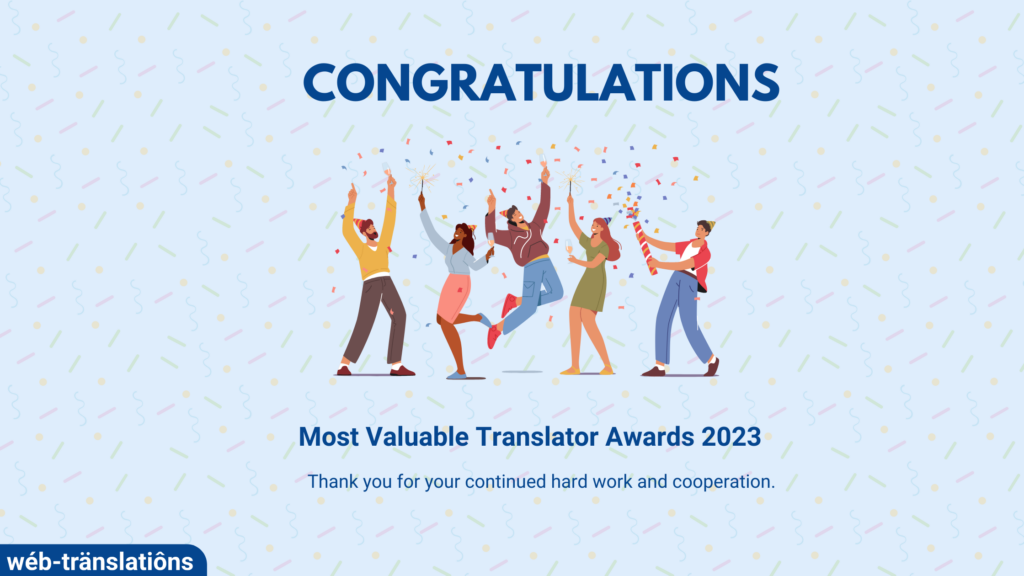
However, the Web-Translations team have been particularly impressed by the below group of linguists this year. Some have provided invaluable assistance on urgent projects, while others have consistently provided high-quality contributions for our key client accounts. Their professionalism, communication and translation talent is second to none and does not go unnoticed.
Please join us in congratulating the following 15 linguists (listed in alphabetical order):
- Axel Couton
- Basel Jbaily
- Carles Hernandez
- Cassandra Herrmann
- Christina Pauly
- Gizem Kartum
- Ingrid Devanne
- Katrin Jarvis
- Laura Mussutto
- Nanda Weiland
- Octavian Blenchea
- Pablo Montero Llano
- Rafael Molina Pulgar
- Thomas Carlsen
- Yookyeng Jeon
Thank you from the bottom of our hearts! We look forward to working with you, and all of our fantastic linguists, throughout the next year! See you next January for the next Most Valuable Translator Awards.
Love,
The Web-Translations Team
New Year Goals for 2024
Happy New Year! We can’t quite believe we’re in 2024 already! Here’s to a month or so of catching ourselves writing the wrong year in our diaries. It’s been 100 years since the first ever foreign language broadcast on US radio, and it’s already been 20 years since the launch of Facebook! Where on earth has that time gone?
With a new year ahead of us, let’s look at some language-related challenges we can set ourselves! We love a challenge, so we’re excited to see what we can achieve this year.
1. Learn a New Language
We couldn’t leave this one off our list! In 2020, 30 million people attempted to learn a new language, according to Duolingo. We think we can beat that easily! Learning a new language is always such a fun and rewarding adventure, and the new year is always a great time to start. The best part is that there’s no wrong way to learn – find however you work best and keep at it.

2. Find People to Share Goals With
Sharing a New Year’s Resolution with others is a great way to make sure you stick to it. If you have a person or group of people there to help you keep on track, you’ll find it much easier to hold yourself accountable. You can even make a little competition between yourselves to really push one another.
3. Travel
Easily the most exciting entry on this list, and one of our favourites! A new year means new opportunities and new adventures. Whether it’s a weekend away, or a wonderful two-week getaway, take the leap and see the world this year. There’s nothing quite like exploring a new city or country with plenty of new experiences waiting for you.

4. Watch International Films & Shows
This is a great way to immerse yourself in a different culture, and get a feel for how a language sounds. Not only do these movies and shows offer great opportunities to learn, but a lot of them are simply just a fantastic watch. If you’re suck on where to start, take a look at our previous blog posts on our team’s favourite international TV shows. For those of you with a taste for something spooky, we’ve even shared a list of our favourite international horror films for you to enjoy.
5. Get Your Content Translated.
Granted, this is more business-oriented for us, but if you’re looking for a way to open doors to new ventures and a world of new business in 2024, then translate your content! Customers are much more likely to buy a product or service if it is offered to them in their native language. This will allow your immediate and long-term sales to benefit hugely!

A new year bringing in new customers sounds amazing, don’t you think?
Do you have any language-related goals for 2024? We’d love to hear all about them! Let us know what your aims are for the new year on our Twitter or LinkedIn pages.
From the team at Web-Translations, we hope you all have a fantastic 2024!
December Discount
For the month of December, we are offering a 20% discount on all translation projects. So, if you have some content that you’d like to translate, get in touch with us today for a free, no-obligation quotation!
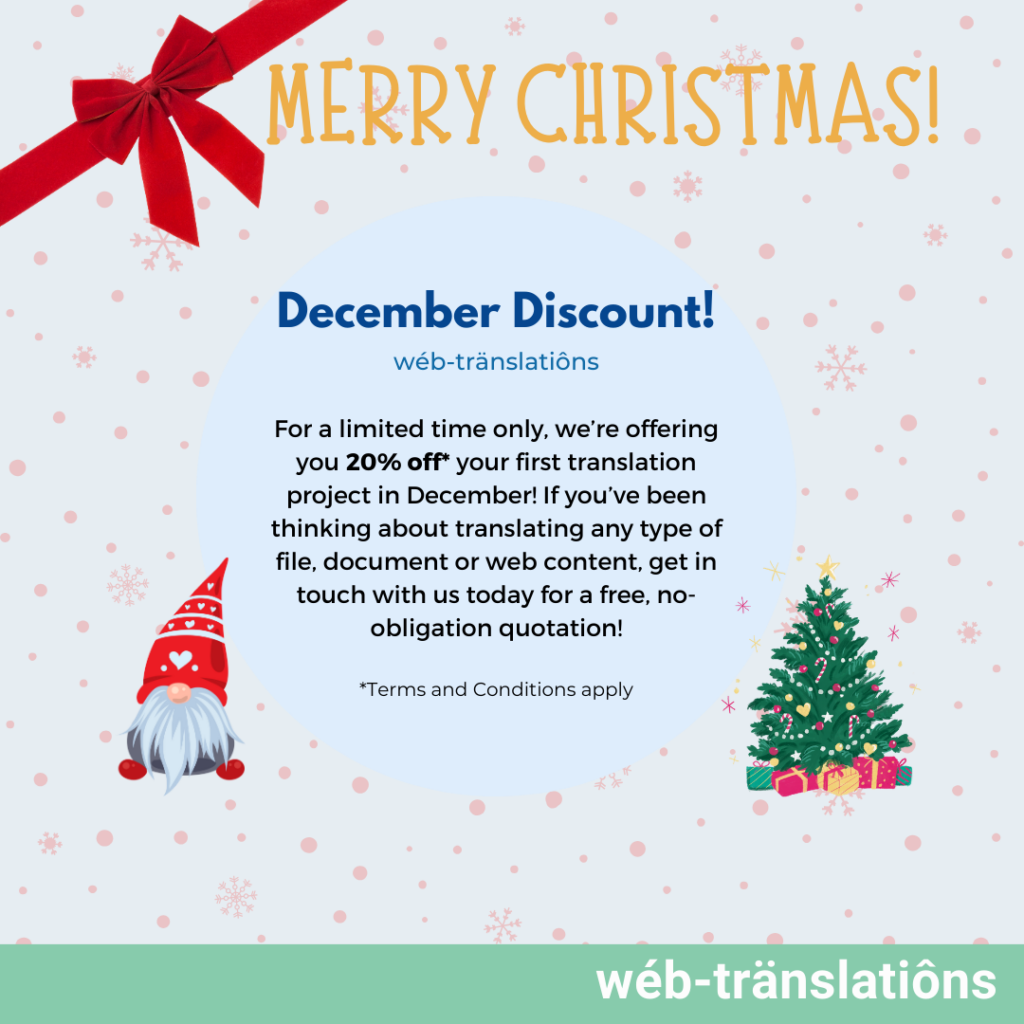
We can offer you:
- A Dedicated Project Manager
- Competitive Translation Rates
- Flexible Payment Terms
Further still, we have a great track record working for clients in a wide range of industries. You can read all about our experience on our portfolio page! Moreover, if you’d like to get to know us more, why not get in touch with our experienced team? That way you can find out what we could do for you.
Terms:
- 20% discount will be applied to our standard rates of translation and proofreading
- Discounts will only be applied to projects exceeding £60
- Furthermore, discounts cannot be applied to Pay-As-You-Go accounts
- This offer is restricted to one order per client
- Please remember that this offer cannot be combined with any other discount
- This offer will expire at 17:00 BST, 31st December 2023
However, if your content isn’t ready for translation, keep an eye out on our social media for future offers. Also, while you’re there, you can also check out our Christmas countdown – we have lots of fun content in store with our very own advent calendar!
Our Top 10 International Horror Films
Halloween is just around the corner! So to get you in the mood for spooky season, we’ve gathered together our top 10 international horror films! So make yourself a hot drink, get yourself comfy and take a look at our top picks!
1. AMERICA – Halloween (Dir. Carpenter, 1978)
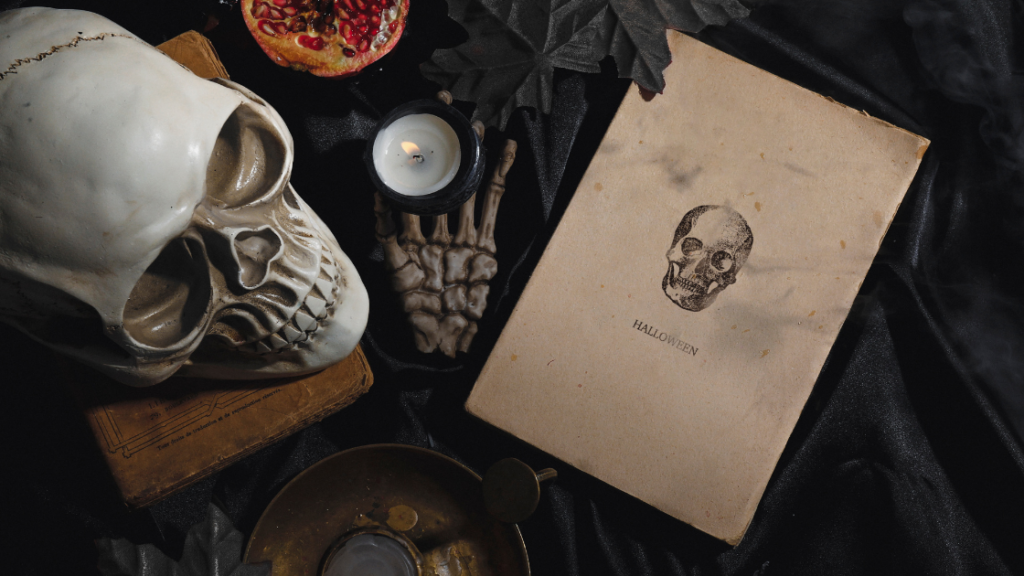
One of the first ever slasher movies, Carpenter’s 1978 masterpiece makes it clear why killer Michael Myers is right up there in the horror villain hall of fame. Even today, Michael still makes audiences want to hide behind their sofas without saying a word.
2. UK – The Wicker Man (Dir. Hardy, 1973)
Police Sergeant Howie, a devout Christian, travels to the mysterious Scottish island of Summerisle to investigate the disappearance of a missing child. He soon discovers that the island residents are all practicing ancient pagan rituals, and they claim that the missing child never even existed. As soon as Howie arrives on the island, the mystery will draw you in and keep you guessing, until the horrifying truth is revealed.
3. GERMANY – Blood Red Sky (Dir. Thorwarth, 2021)
What initially appears as a hijacking thriller takes a sudden turn in this high-octane bloodbath in the sky. Single mother Nadja must protect her son Elias from the hijackers, but little do they realise they are the ones that need protecting from Nadja – a vampire trying to find a cure for her condition in America.
4. SOUTH KOREA – Train to Busan (Dir. Yeon, 2016)
Zombie movies feel lazy and sluggish at times, but that is not the case at all here! A mysterious virus has swept through Korea, and a father is taking his daughter from Seoul to Busan on the KTX bullet train. After an infected stowaway makes their way onto the train, each carriage falls one by one to the horde. Just like the infected masses, the action and thrills in this film are unrelenting.
5. RUSSIA – Sputnik (Dir. Abramenko, 2020)
1983, the height of the Cold War. Two Russian astronauts crash on re-entry, with only the commander surviving. However, it soon becomes clear that something has come back to Earth with him. This chilling Russian “Alien” meets “The X-Files” thriller is a great slow burn, with some brilliant moments of sheer dread.
6. NORWAY – Trollhunter (Dir. Øvredal, 2010)
The first of two found-footage entries on this list follows a group of students investigating a series of mysterious bear deaths. At first, they seem to be a result of poachers, but after meeting a mysterious hunter named Hans, the students uncover a whole new terrifying world. Hans is actually a troll hunter working for the Norwegian government, and he must eliminate some particularly dangerous individuals that have escaped their territory.

7. AUSTRIA – Funny Games (Dir. Haneke, 1997)
Anna is home alone in her family’s lakeside cabin while her husband and son are out sailing. Two men introduce themselves as friends of the neighbours, but they soon refuse to leave. When Anna’s husband Georg returns and tries to remove the two men, things turn violent, and the family ends up being held hostage and forced to play horrific games. To make things even worse, one of the invaders even addresses the audience directly, doubling down on the nightmarish situation.
8. ITALY – Suspiria (Dir. Argento, 1977)
Dario Argento’s masterful cinematography. Goblin’s mystifying, unsettling soundtrack. This giant of Italian Giallo Horror follows Suzy Bannion surviving the mysterious Tanz Akademie and all the mind-bending horrors that hide within. You certainly won’t forget this film in a hurry.
9. SPAIN – REC (Dir. Balagueró, Plaza. 2007)
Another found-footage icon, REC follows TV reporter Angela through the lens of her cameraman Pablo as they report on a local Barcelona fire brigade. The duo follows them on a call to a nearby apartment where an old woman is trapped. They are soon trapped inside the building with the other horrified residents, and something else truly evil.
10. AMERICA – Scream (Dir. Craven, 1996)
My answer to Ghostface’s iconic question; “What’s your favourite scary movie?”. Wes Craven’s classic arguably changed the genre forever. Roger L. Jackson’s voice is still as chilling now as it was in 1996 and will have you scared of a ringing phone for a long time after watching.
We hope you enjoy our picks for 10 International Horror Films! If you’ve got any frightful favourites you’d like to share, get in touch with us here or join us on social media!
International Translation Day: Fun Facts
International Translation Day falls on September 30th every year and every year the day seeks to celebrate language professionals whose work plays an important role in bringing together nations.
The day has been in existence since 2017 when the General Assembly of the UN adopted resolution 71/288 to foster peace and it takes place on 30th September in order to celebrate the feast of St Jerome – the Bible translator considered the patron saint of translators.
As a translation agency, we of course couldn’t let this occasion pass by without a little celebration and we wanted to share this celebration with you by offering some translation facts. We hope you enjoy learning a little more about translation.
An Old Profession
Firstly, did you know that translation has been around for centuries? The Old Testament is thought to have been translated into Greek in the 3rd Century BC!
Most Translated Authors
Agatha Christie, Jules Verne and William Shakespeare are the three most translated authors of all time. Three incredible authors, we think you’ll agree!
Latin Roots
The Latin root of ‘translator’ is ‘translatus’ which means to be carried over. Consequently, the literal meaning of translation is to carry something from one place to another.
Most Translated Children’s Book
The most translated children’s story is Le Petit Prince (The Little Prince) by Antoine de Saint-Exupéry. It has been translated into more than 500 languages!
A Dangerous Profession
Did you know that translation used to be quite a dangerous profession? William Tyndale, for example, was executed in Holland in 1536 due to his translation of the Bible into English being labelled as heretic.
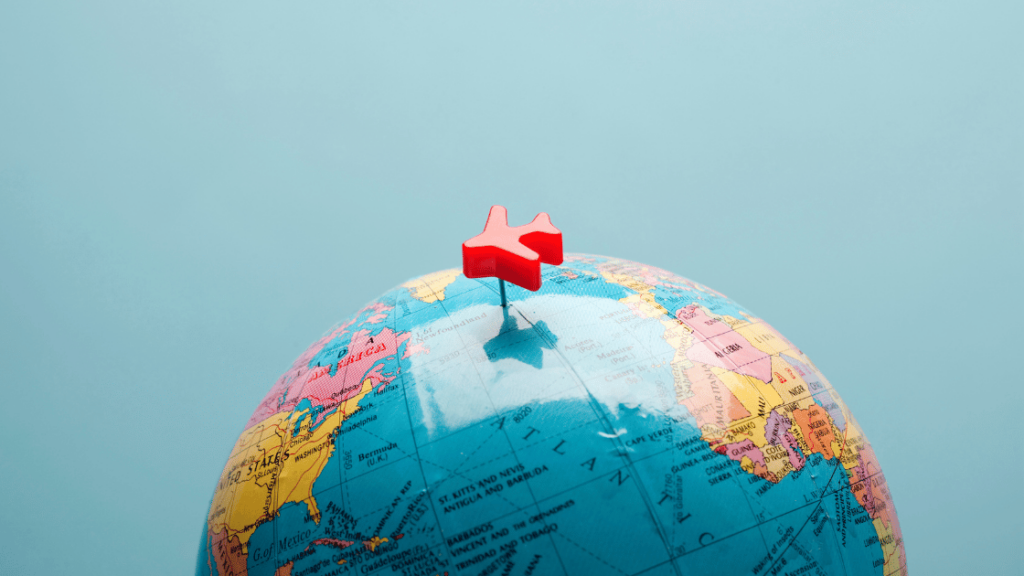
We hope you’ve enjoyed learning a few translation facts! If you have any facts that you’d like to share, please reach out on social media. Equally, if you have any projects that you require our assistance with, please get in touch!
Lifting the Lid on Subtitling Templates
Need your video to be available in multiple languages? Want to show your customers that you invest in them? Don’t fret, at Web-Translations, we are able to add multilingual subtitles to your video content but can reduce turnaround time and cost. For more information on our subtitling service, take a look at our recent blog.
Subtitling for multiple languages can be time-consuming and the cost can add up. However, we can use templates to help save you time and money. Read on to find out more about Subtitling Templates.
What is a Subtitling Template?
Subtitling templates are the transcription of a video’s dialogue and on-screen text. This is done in the language of the video, also known as the source language. But why do need this you may be asking? Why can’t the video just be translated straight into the target languages? Well, when a video is being subtitled the audio needs to be transcribed to create a script. Using this script, the linguists can then add timecodes to each phrase. They also ensure that the timing of the subtitle is aligned with both the video and audio. The linguists can then move onto translating the script, and make any tweaks to the timings. This depends on how the language has expanded or contracted.
Types of templates
Templates can be either locked or unlocked. Locked templates mean that the subtitler cannot amend the timecodes and will just translate the subtitles. This allows for a quicker turnaround, as the linguists won’t need to spend time adjusting the in and out times. Unlocked templates, however, provide the linguist with a base, but allows them to amend the subtitles accordingly.
There are also another two types of template: original language and pivot language. This depends on the language of the video. Original language templates are a time-coded intralingual transcription which is then translated into the target languages. Pivot language templates, however, are a time-coded transcription in a third language. This third language is typically English, and it serves as an intermediary between the source and target languages. For example, if you have a video in Malay, it may be difficult to find linguists to translate into French and Spanish. However, by using a pivot language template, you can have one linguist translating the Malay into English. Then you have linguists translate the template from English into French and Spanish. This is particularly useful for those less common languages.
Although pivot templates mean that less common language videos can be accessible to a wider audience, aspects of the original culture could be lost. After all, the English to French translator may not understand Malay. But this is where annotations come in. A native speaker of the source language creates these annotations. They may note cultural references, the meaning of shortened words, cases of wordplay, puns and jokes. But they may also highlight the use of slang, tone of voice and meaningful names. These annotations mean that the translated subtitles are as close to the original as possible.

Why is Using a Subtitling Template Beneficial?
By creating a template, there are various advantages. We’ve listed some of these below:
- The subtitling process is more efficient, as the video is only transcribed once. This means that the turnaround times are reduced, and you save time.
- The content is standardised across all languages within the project. Therefore each set of subtitles will be consistent.
- As you only need to pay for one template to be created, rather than transcriptions for each language, this allows for a reduced cost, saving you money.
- Quality is assured across all languages, as a native speaker of the original language creates the template. This means that the transcription would be accurate.
- A template also ensures cultural and linguistic accuracy. The native linguist is aware of cultural references. For example, meaningful names, certain monuments, and particular food that is eaten at a certain time.
We hope this blog answers any questions about Subtitling Templates. If you do have any other questions, please get in touch via our contact page or social media.
Fancy learning more about the world of translation? Why not check out our blog lifting the lid on Proofreading?
Mental Health Awareness: Top Tips
May is Mental Health Awareness Month in the UK. It is a time dedicated to raising awareness of mental health, the struggles it can cause, as well as provide tips to help look after our own mental health.
As a company, Web-Translations works with freelancers on a daily basis. Working from home can be isolating as you may spend days without talking to another person, and communication is often done via email. At Web-Translations, we also work from home, and we have acknowledged how important our mental health really is. This is why we want to take a moment to raise awareness and share some tips that may help.
This week we will be sharing some ideas of how to look after your mental health, some translated mindful books and even some tips for how to respect mental health when marketing international campaigns. But for today here are some of our top tips to looking after your mental wellbeing:
Take breaks
Taking breaks is so important to allow ourselves some time to recharge. It can be a short 5-minute break, or even a 2-week long holiday, but just taking time to relax is really beneficial. Although we may think that working non-stop every day means that we will achieve our full potential, this is not the case. Breaks reduce exhaustion and increase energy levels, which in turn will allow for increased productivity.
15 minutes in nature
Nature is an amazing tool for helping our mental health, and it’s literally on our doorstep. Starting your day in nature is proven to be grounding and allows for a relaxed start to the day. I personally like to drink my morning cup of tea outside and set myself up for the day ahead.

Set boundaries and learn to say no
Similarly, it’s difficult to say no and set boundaries in our daily lives. Whether it’s meeting up with friends, taking on a task that’s too much or you don’t have time for, or even feeling guilty when we need to take a sick day at work. But it’s time to look after our own mental wellbeing and start to say no to the things that we don’t have time to do. Or maybe start saying no to the things that we don’t want to do. We are all different and that’s okay.
Mobile-free hour
Technology has allowed society to advance to levels that we didn’t think were possible 20 years ago. However, it has also contributed negatively to mental health in some cases. Not only does it allow for us to easily compare ourselves with others on social media, but many people rely on technology every day. It’s often the first thing that we reach for when we wake up and then last thing that we see before we go to sleep. By starting your day with a mobile-free hour, you don’t wake up to a stressful email and you don’t see the list of tasks that people are asking you to do throughout the day. You can begin the day as you want to.

Exercise
Exercise has been scientifically proven to boost our mood and reduce stress levels. This can play an important part in the care of our mental health. You could go on a walk, go to a dance class, hit the gym, or even do some yoga. Find an exercise that you enjoy and maybe find a group to join too.
Check in with colleagues and family members
A simple smile or ‘how are you doing?’ can go a really long way, especially if someone is struggling. You can never know what’s really going on in someone’s life, so checking in is a great way top help people feel that they can talk to you.
Pet cuddles
Pets are amazing at improving mental health. Although they have no way of communicating verbally, their affection and actions can speak a thousand words. If you’re having a bad day, they are there to cry on. If you have had a stressful call, they are there to listen to you. And they are there to bring a smile to your face when they want to play with their favourite toy.
Below you will see our furry friends – Colyn, Clive, Tommy and Lola. They always put a smile on our faces.
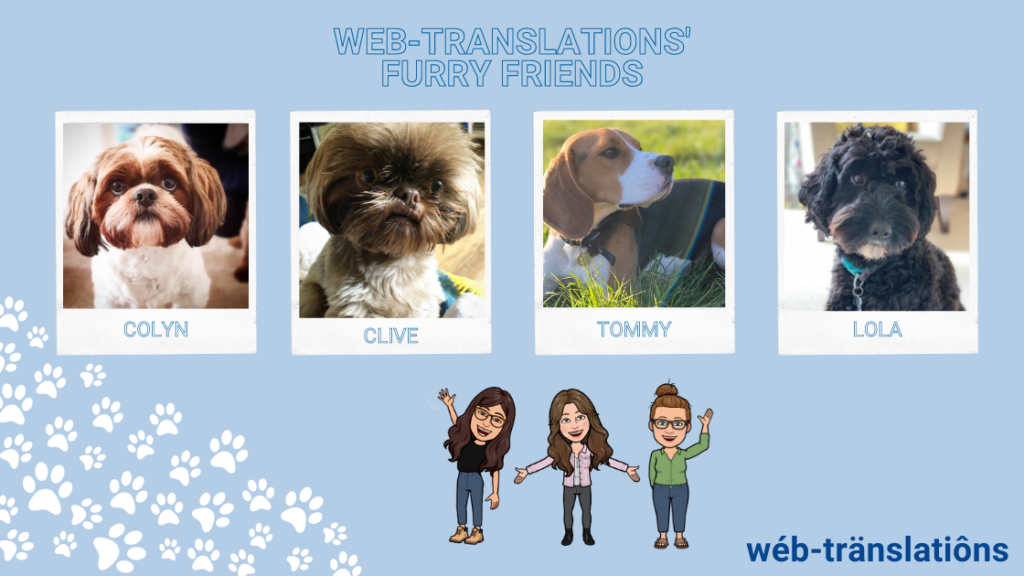
We hope these tips can help you care for your mental health. Also keep an eye on our social media for more mental health related content.
Lifting the Lid on Desktop Publishing
Do you need to translate PDFs, brochures, or other carefully designed content? And have you considered that the layout of these translations may need to change slightly in order to accommodate longer texts, or right-to-left languages?
There’s no need to worry, as we offer a desktop publishing service that will help. Read on to find out how we can help you create perfectly localised materials for print or download.
What is Desktop Publishing?
If you haven’t heard of the term desktop publishing before, you may have heard it referred to as typesetting or DTP. This process involves using design software, such as InDesign, to create files with customisable layouts for print or download.
Simply translating an IDML file export won’t mean that your translated file is ready for printing right away. A specialist designer needs to import the translated file into InDesign, and make any changes. These changes can include:
- Lengthening text boxes
- Changing font sizes
- Tweaking elements
- Adding line breaks
- Formatting embedded graphics
The aim of this process is to make the translated file look as good as the original, whilst avoiding the ‘this has been translated’ look.
The Process
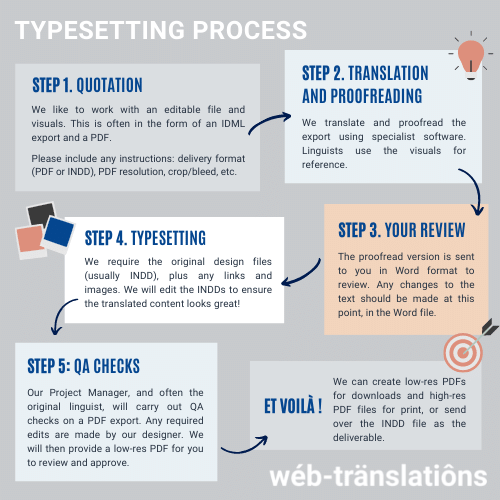
Why use Web-Translations?
Text could expand or contract by around 25% once it has been translated. This may cause some issues when trying to retain the original file’s formatting and layout. If you haven’t planned for this in advance, our designer may need to reduce a font size or increase the size of a text box, for example.
Non-Latin alphabets can also be difficult to work with for the uninitiated. One example of this is Arabic, which reads from right to left. This means that the entire page layout needs to be reversed. As most designers don’t have experience with translation and probably don’t speak the language of the target text, it can be difficult for them to rework the layout and format of the translation. In fact, some designers may even introduce errors to the translated content, as they are not translators themselves. At Web-Translations, however, we could save your designer’s both time and effort, as we have the skill to adjust the formatting and page layout of your translations ready for print.
Our experienced typesetters can tackle anything from business cards to technical manuals, and from packaging to posters, so it’s safe to say that your content is in good hands. But if you’re in the process of designing new marketing collateral for translation, check out our blog post on translating PDFs for some pointers.
Differences Between Languages
As we mentioned earlier, texts can become considerably shorter or longer during the translation process, as each language has its own structure and set of characteristics. Below we’ve provided a few examples of how much some languages can expand or contract when translating from English:
| Language | Average Expansion/ Contraction |
|---|---|
| French | 20% longer |
| German | 20% longer |
| Korean | 10% shorter |
| Swedish | 10% shorter |
| Arabic | 25% longer |
| Spanish | 20-30% longer |
| Finnish | 30% shorter |
| Norwegian | 15% shorter |
We hope these figures give you a better idea of the differences between the languages, and that you’ll be able to bear this in mind when creating your carefully designed documents.
To find out more about our language solutions, please visit our Services page. Or, if you’d like to talk to us directly, why don’t you fill in our contact form? We’re more than happy to help.
Meet the Team – Lauren Hill
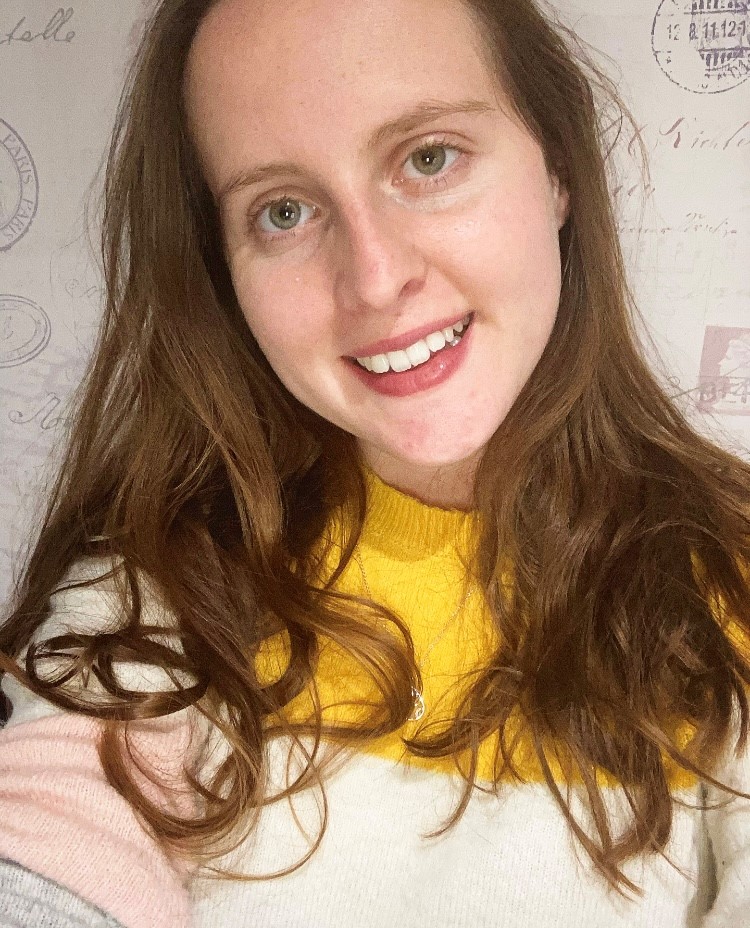
Hi Everyone,
My name is Lauren Hill (not the singer unfortunately). I’ve just joined the Web-Translations Team as a Project Coordinator! I graduated from Swansea University with a Distinction in my Masters in Professional Translation in 2020. Since then, I’ve been working in a French and German customer service role within the automotive sector. I look forward to using not only the knowledge from my translation degrees, but also continuing to use my customer service experience within the translation industry.
I have always loved languages – the different structures and the cultures they belong to. This is why I continued my language journey at university. I studied for a BA in Modern Languages, Translation and Interpreting, where I studied the theoretical concepts of translation and interpreting, along with French and German. After graduating with a First Class Honours, I wanted to focus on translation in particular and decided to study for my Masters. During my MA, I specialised in translation technology as well as audiovisual translation. This is where I found a love for project managing, as I managed a fictious translation company. I thoroughly enjoyed the challenge and look forward to continuing this professionally.
Studying languages and translation has also offered me some amazing opportunities. I have studied at university in the big, beautiful (yet expensive) city of Geneva and in the small German village of Germersheim. I have also spent some time at German summer schools, studying in Kiel and Düsseldorf. This allowed me to meet people from all over the world and learn about various cultures. Aside from academia, my language skills have also allowed me to work in different roles. The first was as a German to English translator for a German company working within the thermal oil industry. Another role was working in customer service, where no two days would ever be the same.
When I’m not working or studying, I love to go on walks in nature and spend time with my two dogs, Colyn and Clive. I also enjoy reading various styles of books. As a language lover, I of course love to learn new languages – I’m currently learning Turkish.
I’m looking forward to using my skills and knowledge in my new role at Web-Translations, and really look forward to meeting our linguists, and clients, both old and new.
Meet the Team – Charlotte Graver

Hi everyone,
I’m Charlotte, and I have recently joined the Web-Translations team as a Project Coordinator. Having just finished my Masters in Spanish to English Translation at Lancaster University, I’m really excited to start my career in the language industry, putting into practice all that I have learnt during my university studies and building upon such skills.
Although my MA centred upon the theoretical aspects of Translation Studies – with one module even allowing me to delve into the rather complex realm of neurolinguistics – my studies equally enabled me to practise translation first-hand. The clearest example of this is my dissertation. Here I translated a contemporary Mexican children’s story and analysed the extent to which we can foreignize macabre culture-bound references, ultimately confronting notions of taboos in literature.
Prior to my Masters, I obtained a First-Class Honours Degree in Spanish Studies and History. Whilst equally based in Lancaster, I did tread further afield as I spent a year teaching English in the very rainy yet incredibly beautiful Galicia. Whether it be walking parts of the Camino de Santiago, eating a mountain of empanadas, or attempting to learn some basic Galician by reading the poetry of Rosalía de Castro, I fell in love with the culture and realised that, in whichever direction my career path lead, languages and culture had to be at the heart of it.
As my dissertation and year abroad illustrate, literature is one of my greatest passions and my dream is to one day translate a novel myself. In the meantime, however, I am thoroughly committed to my new role as a Project Coordinator. Having completed an internship with another Language Service Provider during my MA, I am excited to be diving back into the vibrant language service industry and, what is more, starting my journey at Web-Translations.
First Time Exporters: Full Support for your Website Translation
As the liberalisation of global commerce continues, more and more companies are joining the international market every year. Exporting has traditionally been seen as one of the most risky, and expensive ways to grow a business. While there are many pitfalls and challenges when trading internationally, the Internet offers an excellent way for you to reach out and grow your market share, without investing millions.
Global trade has never been so easy with the First time Exporters Guide. By working with Web-Translations you will have a partner to help you at every stage in your journey. We combine years of experience, with top-quality language and web skills to offer a hand-held, strategic approach to boosting your global trade.




